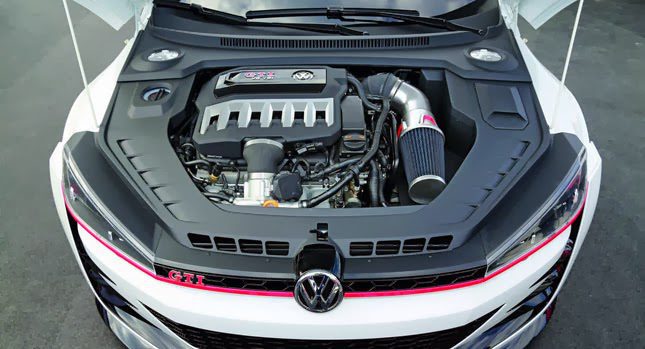Comprehensive Testimonial of a Subcompact Car's Powertrain Capabilities
In the realm of vehicle engineering, the powertrain of a subcompact auto stands as an essential nexus where efficiency, innovation, and efficiency assemble. From the engine's relentless quest of ideal performance to the transmission's smooth choreography of power distribution, every component plays an important role in specifying the general driving experience.
Engine Performance Evaluation
In evaluating the engine efficiency of the subcompact automobile, a comprehensive evaluation exposes its performance and power outcome under various driving problems. The subcompact car's engine, an essential element of its powertrain system, shows commendable performance metrics. The engine's performance is noteworthy, as it optimizes gas usage without compromising power shipment. Under regular driving conditions, the engine runs smoothly, showcasing an equilibrium between performance and fuel economic situation.
In addition, when subjected to strenuous testing circumstances such as high-speed acceleration or uphill climbs up, the engine demonstrates resilience and responsiveness. Its power outcome stays regular, supplying ample velocity when required. The subcompact vehicle's engine is tailored to fulfill the needs of urban driving, where quick acceleration and nimble maneuverability are vital.
In addition, the engine's style includes contemporary innovations that boost its efficiency features. Functions like turbocharging or variable shutoff timing add to boosted power distribution and torque, boosting the general driving experience. Finally, the engine efficiency of the subcompact cars and truck emphasizes its capability to deliver reliable and dependable power outcome across various driving conditions.
Transmission Performance Analysis
Evaluating the subcompact cars and truck's transmission efficiency involves analyzing its performance in transmitting power seamlessly across various driving conditions. The efficiency of a transmission system is essential as it directly impacts the overall efficiency and gas economic climate of the automobile.
One usual method made use of to assess transmission effectiveness is through dynamometer screening, where the power outcome from the engine is measured at the input and result shafts of the transmission. By evaluating these facets, designers can identify locations for improvement and maximize the transmission system for much better total efficiency and efficiency.
Gas Effectiveness Examination
The analysis of the subcompact automobile's fuel effectiveness involves a thorough analysis of its intake rates under numerous driving conditions. Fuel performance is a crucial variable in evaluating the total performance and cost-effectiveness of an automobile. By gauging the amount of gas consumed each range traveled, normally shared as miles per gallon (MPG) or liters per 100 kilometers (L/100 kilometres), the efficiency of the subcompact automobile's powertrain can be established.

Additionally, improvements in technology, such as crossbreed systems, regenerative stopping, and automated start-stop systems, have dramatically improved gas effectiveness in modern-day subcompact vehicles. Manufacturers remain to introduce and enhance powertrain parts to boost gas effectiveness while satisfying performance demands and ecological policies. Examining a subcompact car's fuel performance supplies important understandings for consumers looking for sustainable and affordable transportation options.
Velocity and Handling Evaluation
An integral aspect of reviewing the efficiency abilities of a subcompact automobile depends on analyzing its acceleration and taking care of qualities. Velocity is critical as it establishes how rapidly the car can reach desired speeds, impacting general driving experience and ability to move in various web traffic problems. opel corsa engine. Subcompact autos are often favored for their nimbleness and agility, making velocity from dead stop and throughout overtaking maneuvers essential elements to take into consideration
When it concerns managing, a subcompact vehicle's ability to navigate corners, maintain stability at broadband, and offer a receptive guiding feel are vital. Tight city roads and winding roadways require specific handling to guarantee vehicle driver self-confidence and safety. Aspects such as suspension tuning, weight circulation, and tire grip play significant functions in figuring out a subcompact auto's general handling prowess.

Powertrain Elements Introduction
Upon delving right into the details of a subcompact automobile's performance, an extensive evaluation of its powertrain components is necessary to grasp the automobile's mechanical foundations. The powertrain of a subcompact car usually includes the engine, transmission, driveshaft, differential, and axles. The engine, frequently a smaller displacement four-cylinder in a subcompact cars and truck, is in charge of producing power by burning gas and transforming the power right into mechanical pressure. The transmission, whether handbook or automatic, transfers this power to the wheels via the driveshaft. The differential permits the wheels to rotate at various rates when turning, enhancing ability to move. The axles send power from the differential to the wheels, enabling motion. Understanding exactly how these components interact is vital in examining a subcompact automobile's general efficiency, effectiveness, and driving characteristics. In the next section, we will dig deeper into the details functions and interactions of each powertrain component to provide a detailed review of a subcompact cars and truck's powertrain capacities.
Verdict
Finally, the subcompact automobile's powertrain abilities have been thoroughly assessed in regards to engine performance, transmission efficiency, gas handling, acceleration, and efficiency. The thorough testimonial highlights the relevance of each element collaborating effortlessly to supply optimal performance. In general, the powertrain parts of the subcompact car have been found to be efficient and well-balanced, making it a trusted option for drivers seeking a portable and fuel-efficient automobile.
In the realm of automotive YOURURL.com engineering, the powertrain of a subcompact car stands as a vital nexus where performance, Full Report effectiveness, and innovation converge.In assessing the engine performance of the subcompact car, a detailed evaluation discloses its effectiveness and power outcome under various driving problems.Assessing the subcompact automobile's transmission effectiveness entails analyzing its efficiency in transferring power perfectly throughout various driving conditions. Comprehending just how these elements function with each other is important in analyzing a subcompact car's total performance, performance, and driving dynamics.In final thought, the subcompact car's powertrain abilities have actually been thoroughly assessed in terms of engine performance, transmission effectiveness, fuel acceleration, handling, and effectiveness.